Bearded dragons are popular pets because they are relatively easy to care for. If you’re setting up an enclosure for them, you might also want to add plants to the tank. There are plenty of safe and healthy plants that you can put in your dragon’s tank for different reasons.
Safe plants should be all right as long you provide ample space around each type, so there is plenty of room between vegetation for airflow. Ensure that any branches used from houseplants do not pose an injury risk or become too sharp with time.
Importance of Plants in a Bearded Dragon’s Tank

Bearded dragons need a variety of plants for diet and habitat. Some species love to climb, and others are more ground dwellers. This means that the type of plant you choose will depend on your pet’s natural tendencies, but all bearded dragons should have at least one tall tree or two shorter trees in their tank for the following reasons;
- Perching places: Trees often serve as perches when hunting prey from high points, and these same trees also function as sleeping areas.
- Shade for the lizards: Plants also provide shade and shelter, which bearded dragons need to regulate their temperature.
- Plants are food for beardies: Bearded dragons enjoy eating the leaves and grasses from live plants, especially when hungry.
- Plants also help keep your tank clean: Some plants absorb airborne pollutants and waste materials that might otherwise build up in the corner of the reptile’s habitat. This helps maintain better air quality for both you and your pet.
- Plants provide more hiding places for reptiles. Baby bearded dragons, for example, love privacy.
So what kind of plants should you put in your bearded dragon’s tank?
Safe Plants for Bearded Dragons
Besides UVB light and heat lamps, plants are a very important part of a bearded dragon’s habitat. Bearded dragons like plants because they provide shade from light sources and places to hide if they feel threatened or stressed by other animals in the tank.
Here are 11 plants safe for a bearded dragon’s tank:
1. Ficus
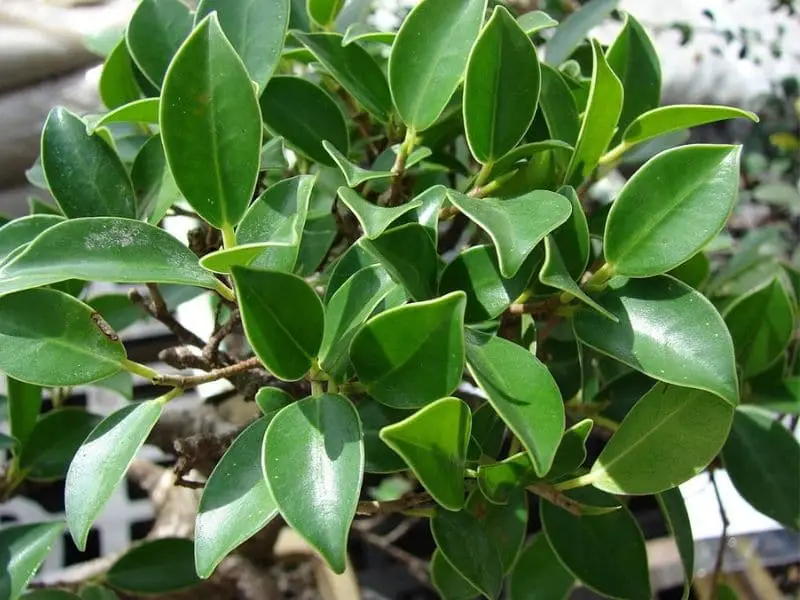
Ficus plants are among the best safe plants to put in a bearded dragon’s tank. They do not need to be replanted, as they grow from cuttings. Bearded dragons will eat the leaves from these plants, so it is a good idea to place them where they can get easy access.
The Ficus is a sub-tropical plant that thrives outside during summer but should stay inside when temperatures reach below 55 degrees Fahrenheit. It grows well indoors because it does not require much light or water and will live for years if cared for properly without needing any repotting!
There are wide different varieties, with some being quite popular such as weeping figs which hang down from their branches like “tails”, hence giving them this name.
2. Aloe Vera Plant
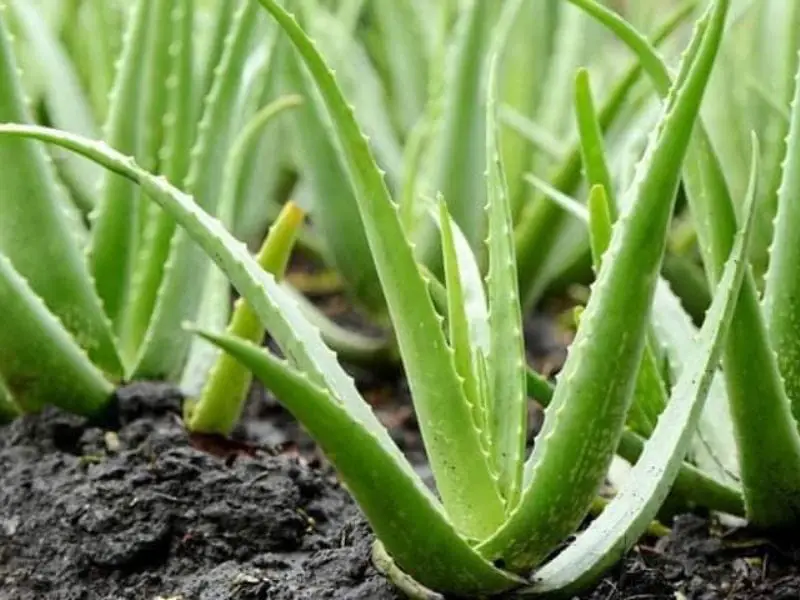
Aloe vera plants are great for bearded dragons because they’re a good place where the beardies can hide and sleep. They can also create shade areas within the bearded dragon’s enclosure.
Aloe vera plants are commonly found in the natural habitat of reptiles (arid and semi-arid areas), that’s why they’re a great addition to help mimic this kind of environment.
Make sure that the reptile pet’s enclosure has enough space so that the roots of your aloe vera plants don’t get too crowded together and start spreading across the ground, damaging the substrate. Also, choose the small varieties of aloe vera plants because they are a more manageable size for enclosures.
The succulent will need to be watered minimally to prevent overwatering that can cause fungus in the vivarium, killing the plant and affecting the pet reptile.
3. Jade Plant (Portulacaria afra)
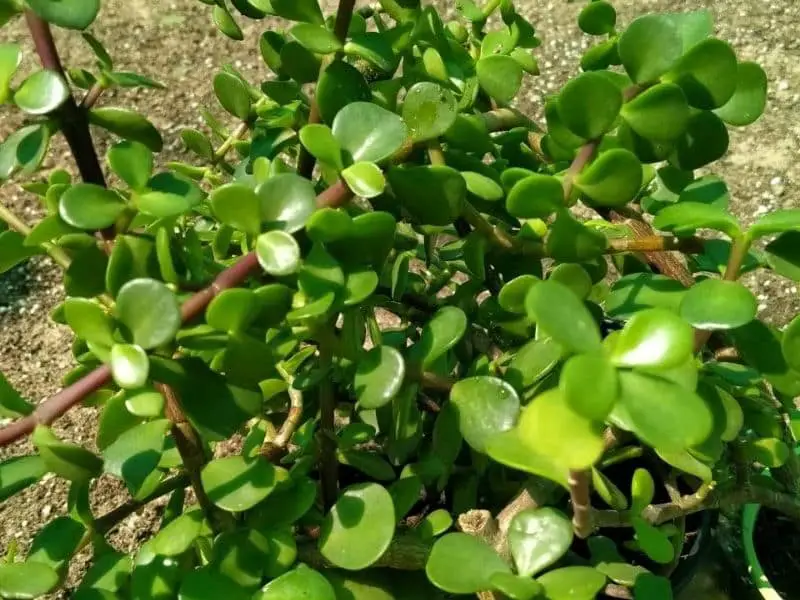
Jade plants are great for bearded dragon tanks because they can grow in dry conditions and do not need a lot of light, so they can be placed on the backside of the tank, where they will receive less sunlight than other plants.
The plant is also low maintenance because they are slow growers requiring minimal upkeep, making it suitable for a vivarium requiring minimal disruption.
- Plant a dwarf variety of jade plants in the reptile pet’s tank to utilize the small space properly.
- Prune the jade plant often to maintain its small size and prevent it from taking up too much room at the expense of your pet lizard.
Caution: Some jade plant varieties such as Crassula ovata, can be mildly toxic to lizards. Ensure you buy the correct jade plant – the Portulacaria afra – for your pet’s tank.
READ ALSO: Can Bearded Dragons Eat Cilantro? How Much + How Often
4. Prickly pear cactus

Bearded dragons eat cactus species that are edible such as the Opuntia species. If you want to add some colour to the bearded dragon’s tank without adding invasive species, prickly pear cactus is a good option.
The benefits of these plants for bearded dragons include the following
- Prickly pear cactus has spines that can offer your pet something to climb up.
- It is a great vegetable to feed your reptile gecko.
- The moisture content is high – your pet will benefit from the hydration when they eat the cactus.
Prickly pear cacti thrive in dry conditions due to their ability to store moisture from rainwater within special cells around their stems and leaves when growing in times of plenty and during drought. They will require very little care when planted in the vivarium.
5. Bromeliads

Bearded dragons spend some of their time in trees and bushes in the wild, basking underneath leaves for protection. They are also known to chew on dead leaves and branches. These two behaviors make it a good idea to include plants with bark or dead leaf material as part of your bearded dragon’s environment.
Bromeliads are an excellent choice because they will provide both benefits:
- The rough surface is great for chewing
- Bromeliads are great for providing additional shelter from the light and heat sources that can cause too much stress on your pet during daylight hours.
Keep bromeliads away from direct sunlight and water them about once a week. Some great bromeliads for your bearded dragon’s tank are:
- Arrowhead plant (Syngonium podophyllum)
- Ivory Towers orchid (Cyrtopodium punctatum)
- Tillandsia usneoides, also known as Spanish moss tree and Java fern
6. Echeveria
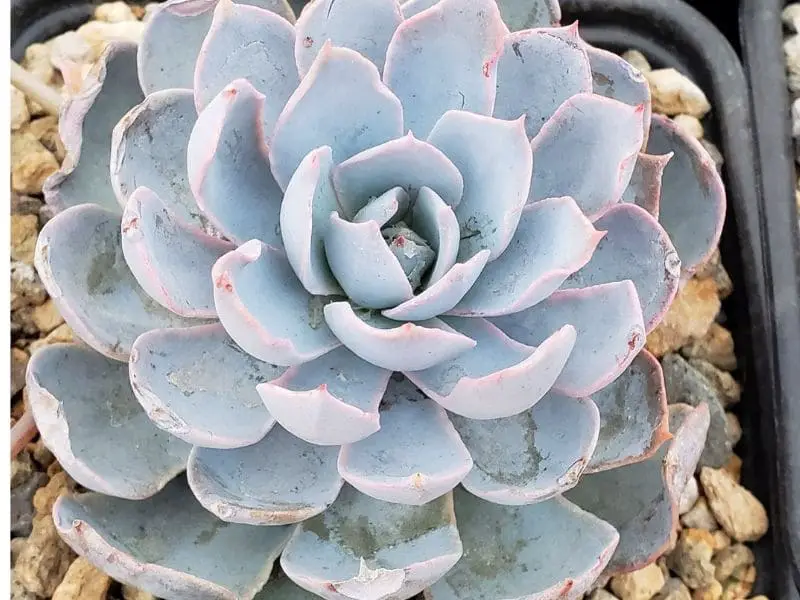
Echeveria plants can provide bearded dragons with a safe hideaway to rest and play. Also, succulents don’t need much water and prefer cooler conditions. This makes them an ideal plant for reptiles who want to stay cool in their tanks without heating up with high-temperature lamps overhead or basking stations at the bottom of the enclosure.
These plants grow in soil or on rocks and come in many shapes. They also thrive well in terrariums while requiring very minimal care. At the same time, you can use them as decorative plants if you plan to display your beardie’s enclosure in a visible place in your house.
READ ALSO: Bearded Dragon Won’t Eat Greens: How to Get them to Eat Greens
7. Spider plant
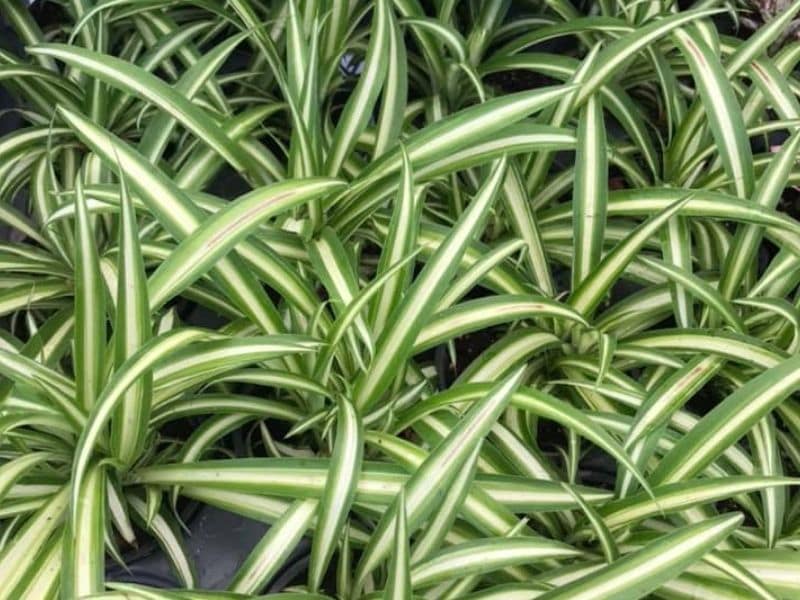
The spider plant is a great addition to any bearded dragon tank. These plants are completely safe for reptile pets and will provide them with shade and humidity.
With 16 different species of this type of plant, you’ll have plenty of variety when designing your enclosure’s landscape!
Place the spider plant on the side of the vivarium that receives bright to moderate light to grow healthy and happy. You may need to prune the plant often to prevent it from growing and crowding the tank.
Take precautions not to feed your bearded dragon on spider plants. It is not known whether or not this sap can cause them discomfort.
8. Snake plants

Snake plants are safe, non-toxic plants for bearded dragons. They are some of the best plants for bearded dragons if you’re looking for a low-maintenance addition to your tank’s landscape. They don’t need much light and they grow slowly.
Place this green variety in a spot with moderate levels of indirect or filtered sun exposure because direct sunlight will scorch its leaves! This stunning houseplant can easily be pruned by cutting off at least two inches from the base every few weeks when it flowers to prevent it from taking too much space in the vivarium.
Caution: Do not feed your bearded dragon on snake plants. Like aloe vera, they contain saponins that can harm the digestive system of bearded dragons and other reptiles.
9. Tillandsia Ionantha
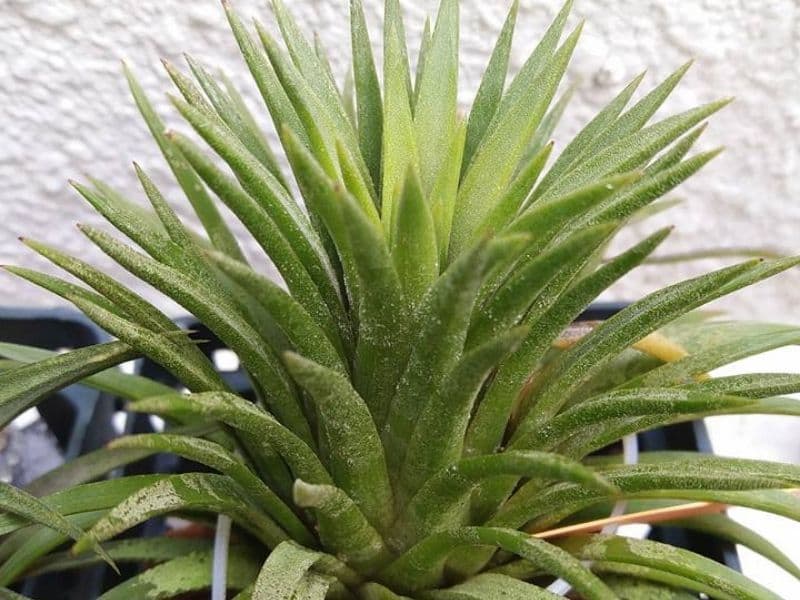
Tillandsia Ionantha is a small, easy-to-grow lush green plant with long leaves that can be found in nature all over the world. This type of bromeliad has water stored in its center; it will not dry out easily, so it is easy to care for. It grows well indoors, making Tillandsias great plants for reptiles kept inside their enclosures – including bearded dragons.
However, they must be misted daily as they do not like staying in wet soil too long and consequently get mouldy/overgrown, which could lead them to illness. They also need to be fertilized using slow-release plant food.
10. Basil

Apart from being a popular kitchen Basil is a great addition to your bearded dragon tank. Basil is a low-growing herb that grows relatively quickly, making it perfect for the bearded dragon’s tank. The reptiles like to eat basil so it will provide some nourishment for them.
Basil requires a lot of light and should be grown in the tank on top of an enclosure lid or mesh screen to offer it plenty of sunlight. While basil is safe for bearded dragons, they are not as fond of its leaves when compared with other herbs like parsley.
List of Toxic Plants for Bearded Dragons
- Anthurium
- Bamboo Palm (Trachycarpus fortune)
- Dracaena marginata (Red-edged Dracaena, Madagascar Dragon Tree, Red Sheen Dracaena)Bitter Melon
- English Ivy
- Henbane
- Daffodil
- Lantana
- Poison Ivy
- Poison sumac
- Poison oak
- Shamrock Plant
- Sweet pea
- Narcissus
- Rubber Plant
- Morning glory
- Boxwood
- Buttercup
- Wild Daffodil
Besides including edible plants in their tank, bearded dragons need a diet of bugs. Apart from crickets, You should also feed your pet larger prey like mealworms or super worms because they provide more nutrition and variety than crickets.
It’s important never to give your baby too many giant insects, as this can lead to obesity in bearded dragons. Vary their diet by adding some plants in their vivarium or simply feeding them prepared vegetables to help them grow healthy.
If you are unsure about what plant to grow in your reptile pet’s vivarium, consult with your pet veterinarian so that you don’t put the dragon in danger.
Can bearded dragons eat flowers?
Yes, bearded dragons will eat flowers that are in the tank. They don’t need to eat them often, but it’s nice to have something colorful!
Avoid dandelions and poppies because they contain toxins which can harm your bearded dragon. So, which flowers can be safely eaten by bearded dragons?
Here’s a list of flowers that bearded dragons can eat:
- Geraniums
- Hibiscus
- Rose petals
- Dahlias
- Day Lilies
- Carnation
- Violets (not African)
- Pansies
Can you put fake plants in a beardie’s tank?
You can put fake plants if you want to skip the dangers of having live plants in the bearded dragon’s tank. – The bearded dragon will enjoy climbing the artificial plants without harming them. The only downside is that the pets will not eat plastic plants – some beardies like to eat vegetation.
Plastic plants don’t require maintenance when planted in a bearded dragon’s tank. They’re also cheaper than live plants and can be used with different types of tank setups without worrying about their light and water requirements.
You may want to remove the plastic plant if your beardie does not like it. You’ll know this when the pet does not interact with or climb the plant.
Conclusion
Keep in mind that plants can be decorative and, at the same time, beneficial to the bearded dragon’s vivarium. When choosing a plant as you set up the tank, remember to select plants considering their care, the conditions in your house, and how much time you have to care for the plants.
Most plants will require light, but not all light sources are great for these plants. A light bulb is required in the vivarium, which might affect the plant’s growth. In addition to light, plants require varying humidity levels.
The heat in the tank is another thing worth considering. Plants have specific temperature requirements. Therefore, hardy plants are always a better consideration for the vivarium than those that need temperatures that may not be suitable for your bearded dragon.
READ NEXT: Bearded Dragon Sleeping in the Corner – Reasons + What to Do

